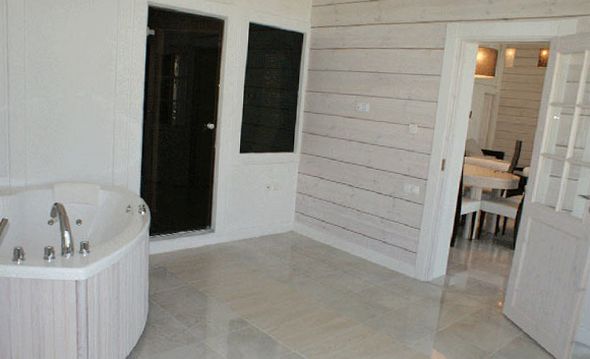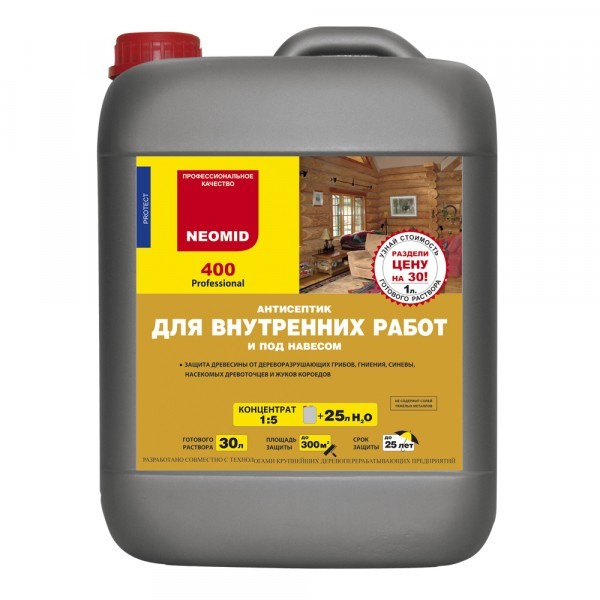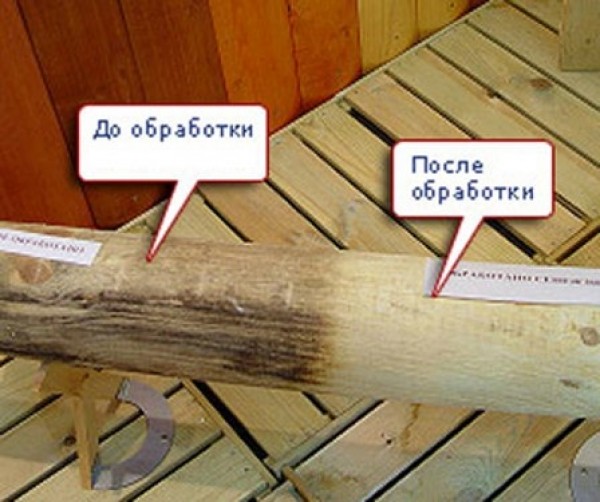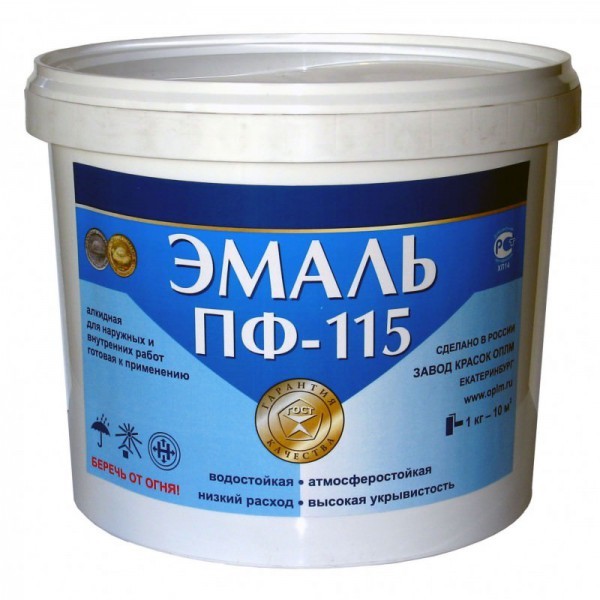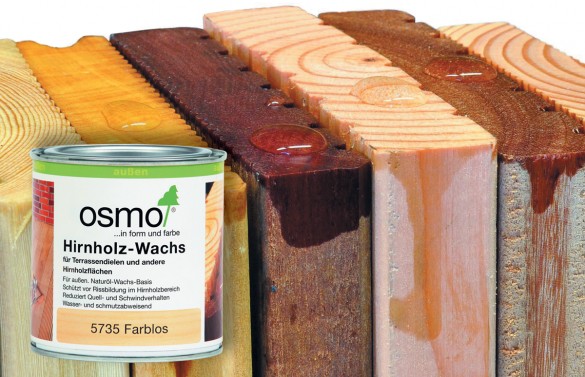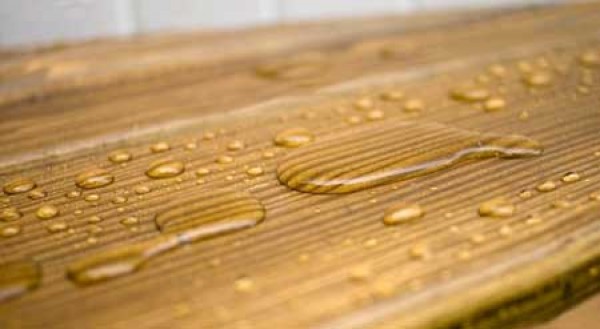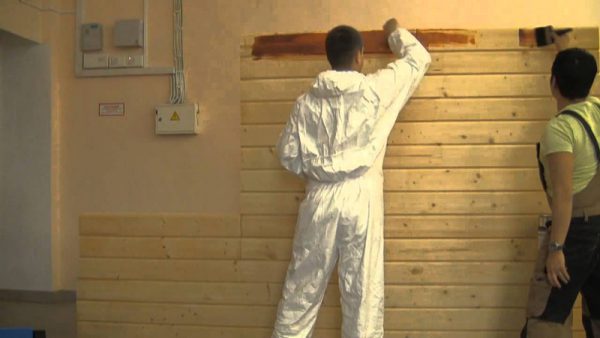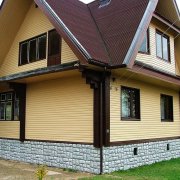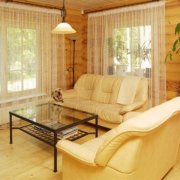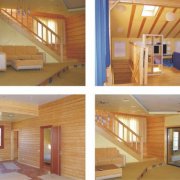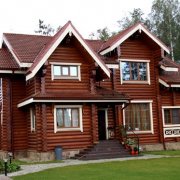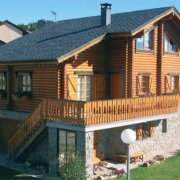How to paint inside a wooden house
When you don’t want to hide a “living” tree under a layer of plaster or drywall, there is the only right decision how to protect it and preserve its natural beauty without destroying its natural ability to breathe, while maintaining a favorable microclimate in the house.
This is a painting of wooden walls inside the house with special compositions. If you are interested in this topic and want to understand what materials are best to choose for this purpose, read on.
The content of the article
The choice of paints for wooden walls
If a person has chosen a tree for construction, then he wants to live in environmentally friendly housing. Therefore, you need to think very well what kind of paint paint a wooden house insideso as not to close its pores and then breathe in harmful fumes.
In general, walls cannot be simply taken and painted; they must be treated with several compounds, each of which performs its function. Some of them are mandatory, as they protect the wood from decay or fire, others are intended solely for decorative purposes.
Note! It is only necessary to paint the log house after it has dried, since wood of natural moisture does not accept paint well. And while it dries, it must be treated with an antiseptic to prevent mold.
Protective and repair compounds
These include antiseptics, flame retardants and bleaches:
- Since wood is a natural material, it is exposed to the harmful effects of moisture, ultraviolet rays and insects. Inside the house, this effect is less than outside, but it still has a place to be, so the instruction requires mandatory antiseptics. Choosing an antiseptic impregnation for internal processing, it is necessary to dwell on compositions on a natural organic basis. They do not provide such powerful protection as chemicals, but enough for the internal walls.
Note. Such impregnations may be colorless or tinted. The former are used when the subsequent decorative painting of the walls is ahead, the latter can immediately give them the desired shade.
- Fire retardant compounds protect wood from fire. Their use is mandatory if it is assumed that the interior of the wooden house is painted with flammable paints. For instance, acrylic paints.
- If immediately after polishing the timber or log is not painted, they begin to darken. In this case, bleaches will help return the material to its original form.
Varnishes and paints
For decorative decoration, you can use many types of paint and varnish products - most of them fit well on a tree.
But are they all capable of preserving its natural properties:
- Oil paints penetrate deep into the wood, protecting it from moisture and fungus. But they are toxic, have a pungent odor, and can also leave streaks on the surface.
- Alkyd Enamels create a thin waterproof film on the surface, protecting the tree from moisture, but also destroying its ability to breathe. This paint is for interior decoration of a wooden house - A great option for painting doors, window frames, floors and surfaces that can get water.But not for walls and ceilings in living rooms.
- Non-toxic and odorless acrylic paints are very popular. based on acrylate resins and water as a solvent. Their advantages: dry quickly, serve for a long time, have a wide palette of colors. But synthetic resins still partially clog the pores of the tree. Finishing with acrylic varnishes and paints can not be called harmful, but it is not an ideal option either.
- The best solution when you want to hide the texture of the tree and give the surface a different color is water-based paint for a wooden house inside. It is environmentally friendly and vapor permeable, with the help of tinting it can be given any shade from a huge palette. You can choose a matte or glossy finish, as well as paint that is resistant to wet cleaning.
Tip. If little light enters the room, choose light shades for painting. Matte texture is good for bedrooms, and glossy for front rooms - living room, dining room.
Oils and Waxes
This group of finishing materials is the most natural and is considered the best option for protective and decorative processing of wood. Compositions based on natural oil and / or wax are glaze, that is, do not hide the natural structure of wood, but emphasize it and give the surface a different shade.
The walls after such a coating look velvety and alive and do not require re-impregnation for 20-25 years. Of course, when it comes to the interior, as outside this period is reduced to 5-8 years.
The main disadvantage of oil-wax formulations is the high price. That is why they are not as popular as cheaper impregnations based on chemical solvents. But if you compare the consumption of those and other means per square meter, then the total cost of finishing will be comparable, since the former require much less.
And if we take into account the durability of such coatings, their safety for health and the preservation of the natural properties of wood, then the advantage will be clearly on their side.
If you decide to calculate how much it costs to paint a wooden house inside with one or another composition, take the average consumption indicated on the package as the basis and consider the following points:
- Wax and oil impregnations have a large dry residue, while “chemical” solvent-based compounds are absorbed into the wood like a sponge, requiring the application of not one, two, but several layers. They will need much more in volume, so the cost in the end will differ slightly.
Tip. Oil and wax on the finish will take much less if applied to a well-sanded surface.
- The molecules of natural oils are several tens of times smaller than the molecules of synthetic resins, so they easily penetrate the smallest pores of the tree, but do not clog them. While synthetics remain on the surface and eventually begins to peel off.
- As already mentioned, the next treatment when using oil will be required only after many years, and it will be enough to apply only one thin layer.
As a result, we get that the most expensive compounds are obtained not only the most profitable in the long term, but also the most environmentally friendly.
Technology for finishing wooden walls
Painting a wooden house inside with your own hands should be carried out in a certain sequence, in compliance with the technology. Brushes and narrow rollers are best suited for applying oil, since it should be rubbed with a thin layer, you can use a spray gun for paints and antiseptics.
Work sequence:
- First, the surface is polished to remove the remnants of bark, dirt and mold from the wood, to make it smooth;
- Then comes the treatment with antiseptics and flame retardants, it should be especially thorough at the joints and in the corners;
- If the wood is raw, at this stage take a break until it reaches a moisture content of at least 20%;
- Before decorative processing the walls need to be slightly moistened, and after drying, walk with a thin sandpaper to remove the raised villi;
- Paint or varnish is applied along the fibers, in a horizontal direction, starting from the upper rim and gradually sinking down;
- You can paint the second layer only after the final drying of the previous one.
This work is carried out only at a temperature not lower than +5 degrees and air humidity not more than 80%.
Conclusion
It is difficult to advise any specific brands of paints and varnishes - there are a lot of them. In order not to be mistaken, you need to carefully study the composition on the label, reviews about the manufacturer, compare trial colors.
If you want to do this work yourself, see the video in this article for more information.
